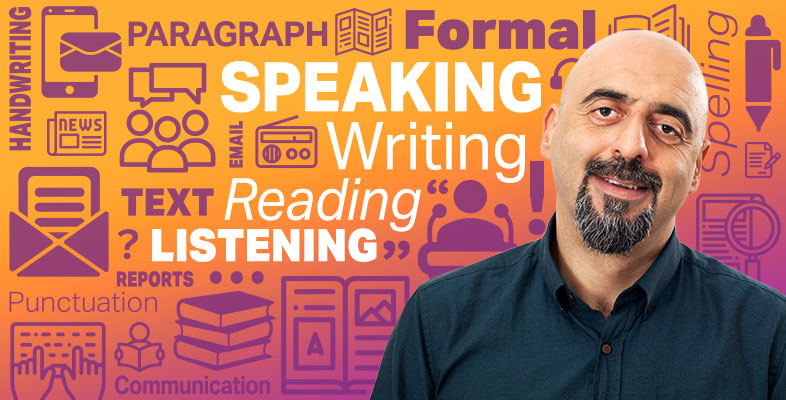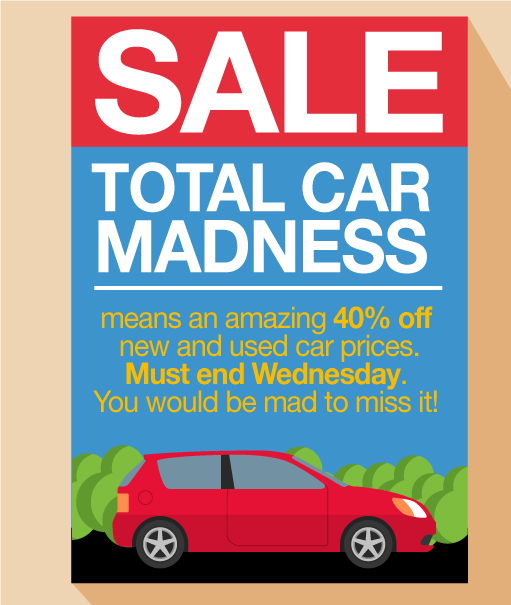3.2 Writing to persuade
From charity leaflets that come through our door to newspaper articles that try to sway our point of view, texts to persuade are all around us.
When you write to persuade, you usually need to be more forceful than when you write to advise.
Activity 18 Your own experience of persuading
Think about the last time you tried to persuade someone to do something (not necessarily in writing). Who did you try to persuade and to do what?
Discussion
You may not realise it but we often use persuasion in everyday life! For example, you may have tried to:
- persuade your friends to go on a night out
- persuade your work colleagues to join a charity event
- persuade your children to get ready to go to school.
Of course, you may have thought of a completely different example.
Writing to persuade is about trying to get your audience to do something. When you write to persuade, you usually need to be more forceful than when you write to advise.
Writers use a number of different techniques to do this as shown in the box below.
Persuasive writing techniques
- Direct address Speaking directly to the audience using ‘we’ or ‘you’
- Alliteration A group of words beginning with the same letter or sound
- Facts Something that can be proven as true
- Opinion A belief that can’t be proven
- Rhetorical question A question that does not need an answer
- Emotive language Words that ‘tug on the heart strings’ and create a strong response in the reader
- Statistics Numerical facts and data to support a point
- Triples List of three things in a sentence
Activity 19 Persuasive techniques (1)
Have a look at the advert below. Drag and drop the techniques used by the writer into the appropriate slot.
Discussion
Even a simple advert such as this involves several persuasive writing techniques. See if you can spot these techniques in other adverts.
Activity 20 Persuasive techniques (2)
Match the persuasive technique with the example.
Using the following two lists, match each numbered item with the correct letter.
Six, sizzling sausages
How could you resist this deal?
89% of adults in Great Britain used the internet weekly in 2018.
You need to stop, look and listen before crossing the road.
a.Statistics
b.Triple
c.Alliteration
d.Rhetorical question
- 1 = c
- 2 = d
- 3 = a
- 4 = b
Now try a few more.
Using the following two lists, match each numbered item with the correct letter.
We need you
A snail can sleep for three years.
Getting the bus to work is far better than walking.
An innocent girl was knocked over by the huge car when the drunken idiot lost control.
a.Direct address
b.Emotive language
c.Fact
d.Opinion
- 1 = a
- 2 = c
- 3 = d
- 4 = b
Activity 21 Persuasive techniques (3)
You may remember the advert below from Session 2. See if you can remember the persuasive techniques used to try to influence the audience.
Discussion
- Words like ‘madness’, ‘amazing’ and ‘mad’ grab your attention and make you read the advertisement. Words like these are called emotive words. Although they are attention grabbing, they do not really give any information and often exaggerate.
- Bold type and capitals are used to emphasise words.
- The phrase ‘Must end Wednesday’ suggests you have to hurry to take advantage of the offer.
Activity 22 Planning a persuasive email
Imagine that you have organised a sponsored run for a local charity that provides support to older people in your area. Try to plan an email persuading your friends to take part. Make a list of the points that you must include and the points you might include.
Discussion
See how your ideas compare to these.
Must include:
- Event information: when and where it will take place.
- Reason: background on the charity and where the money will go.
- Why your friends should take part.
- The benefits for them of taking part.
- How to apply to take part.
Might include:
- Other local events organised in aid of the charity.
Activity 23 Writing a persuasive email
Now, using the plan from the previous activity, write an email to your friends persuading them to take part in the sponsored run.
Hint: Use at least three of the techniques learned earlier to help you persuade your audience.
Discussion
You may have used a number of different techniques to persuade your friend. Here are a few examples:
- Emotive language: ‘The event is for charity and will help to support hundreds of lonely and vulnerable older people.’
- Rhetorical question: ‘Who wouldn’t want to get fit and have fun?’
- Opinion: ‘Running is the best form of exercise.’
- Fact: ‘The sponsored run is 5 km.’

